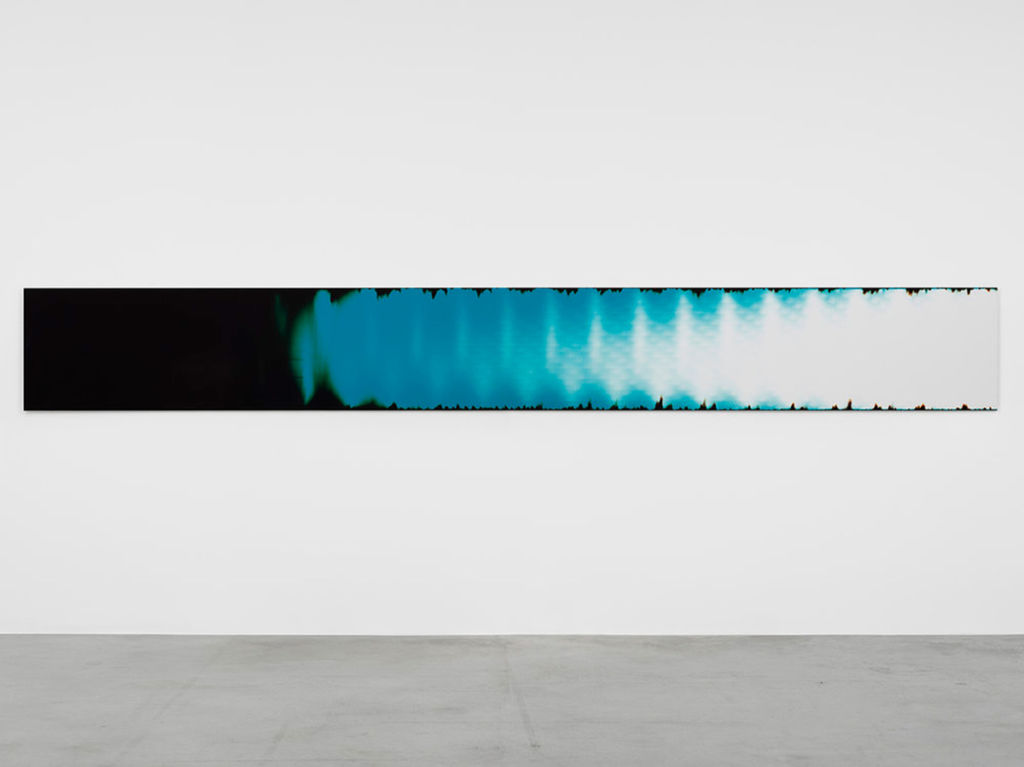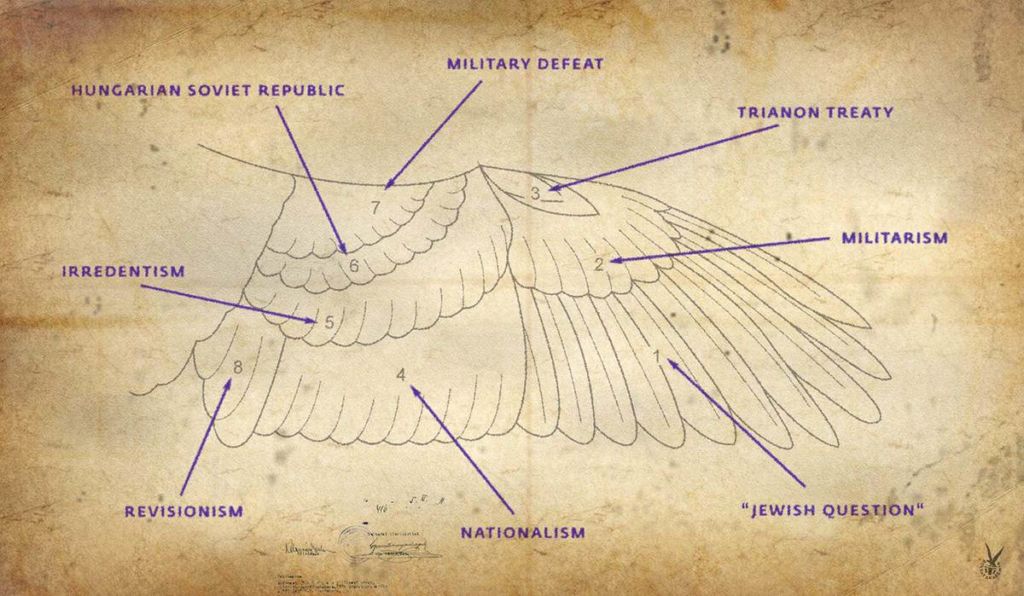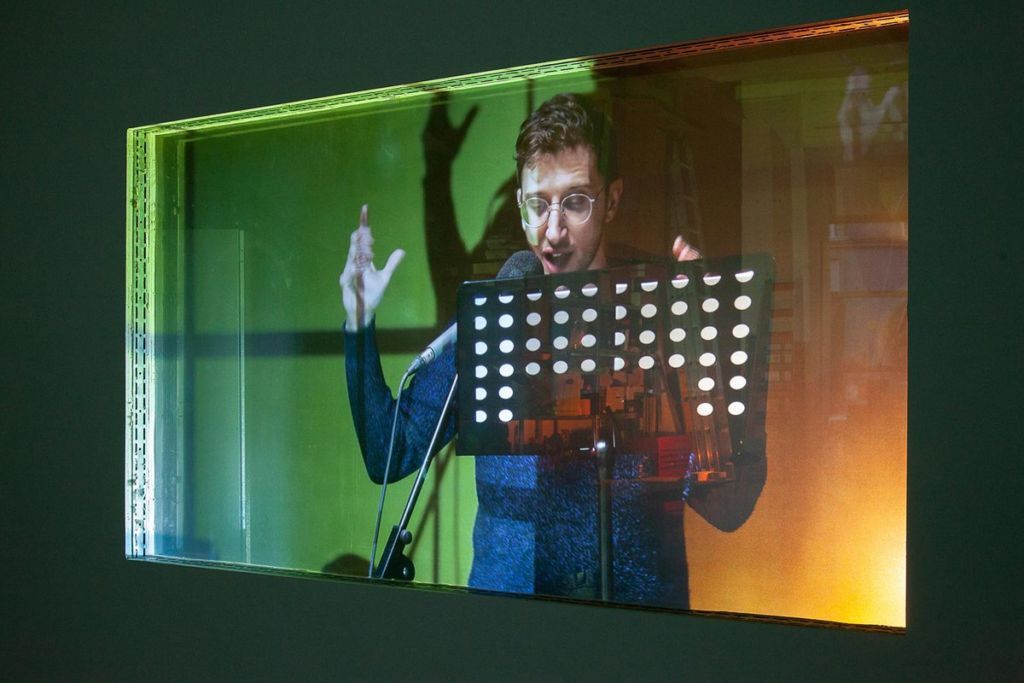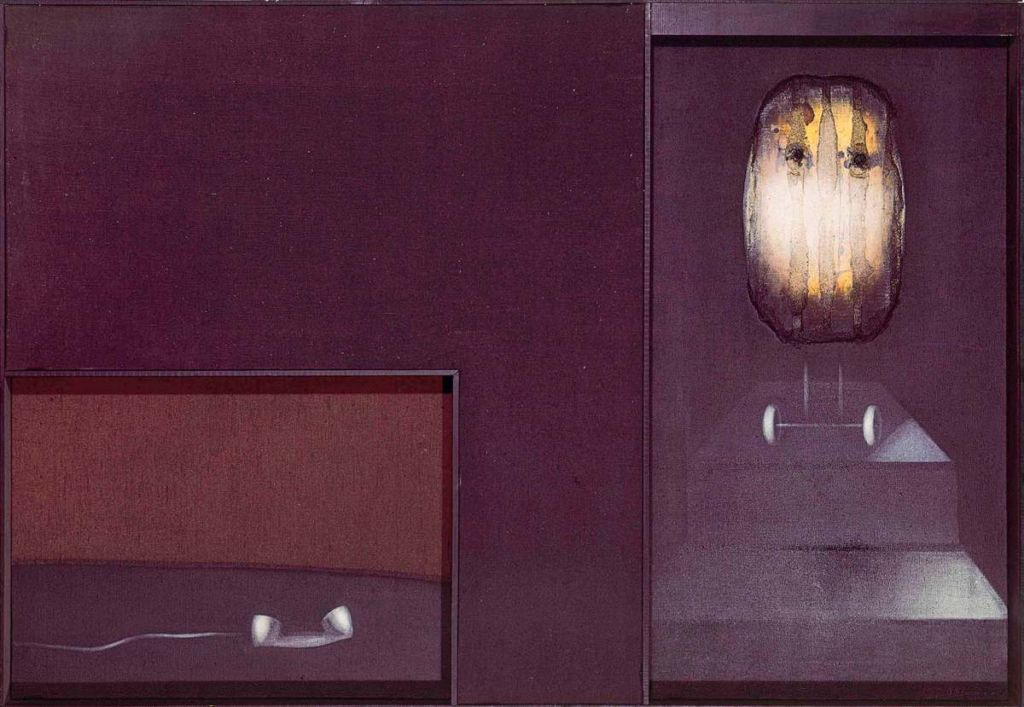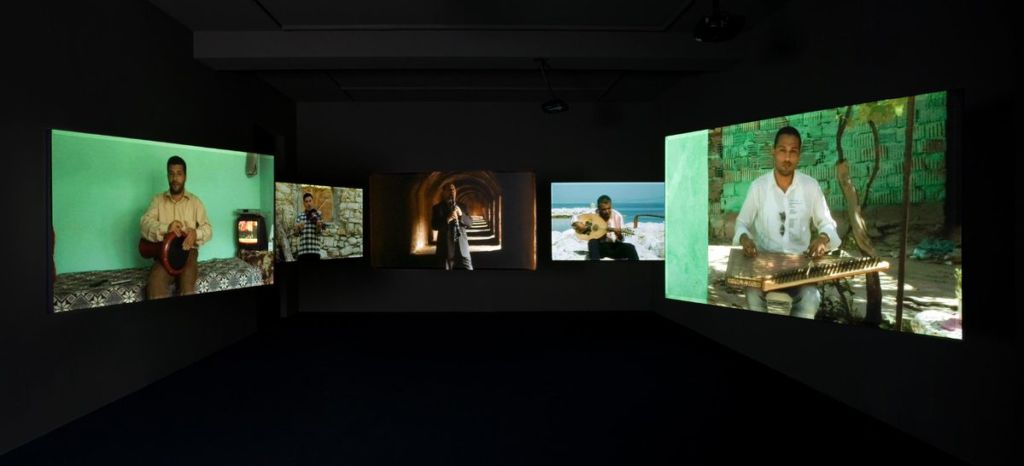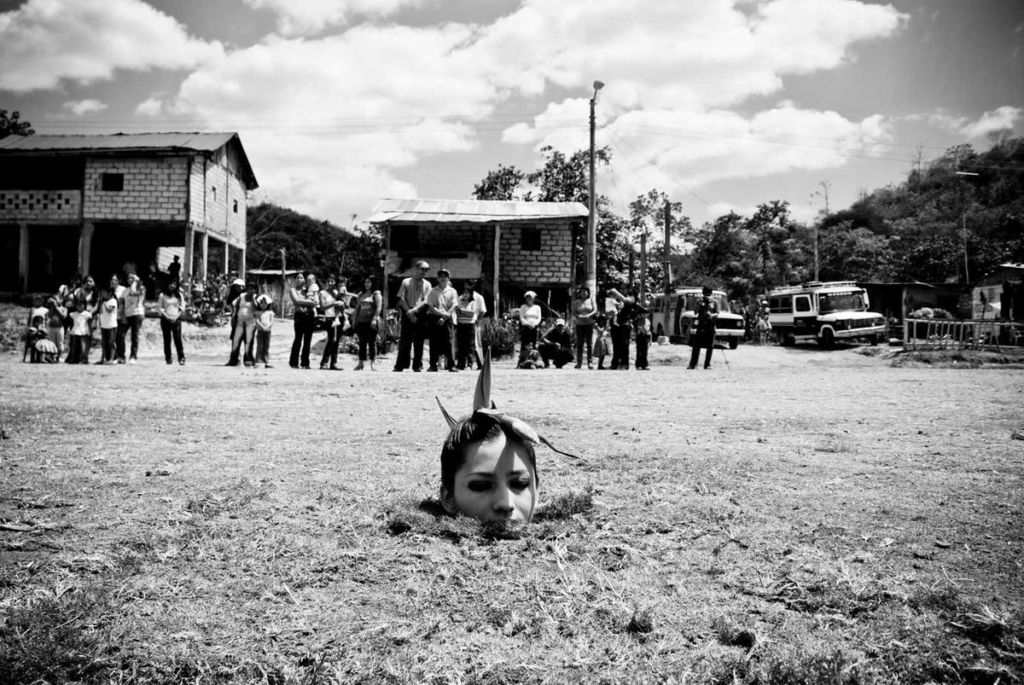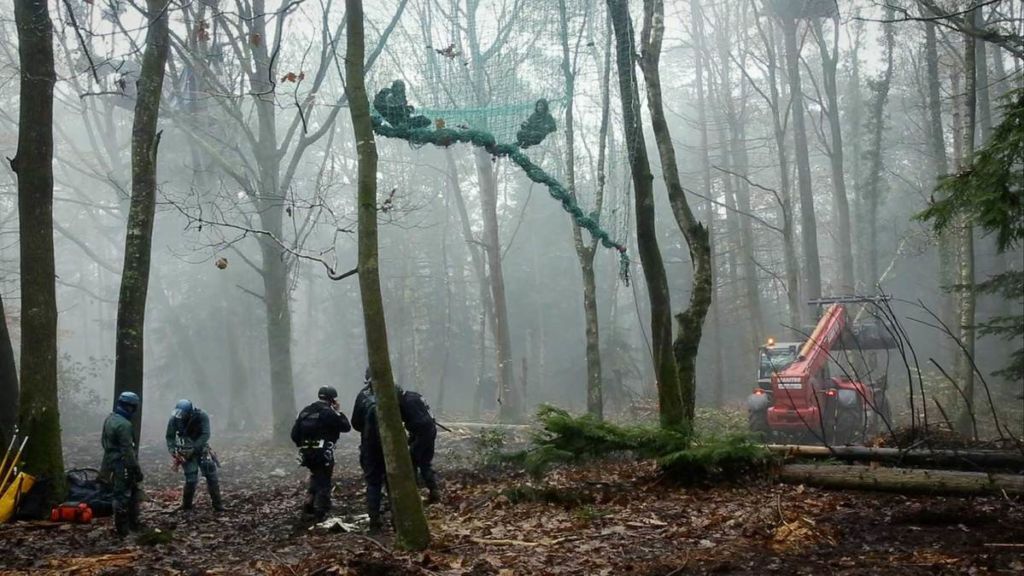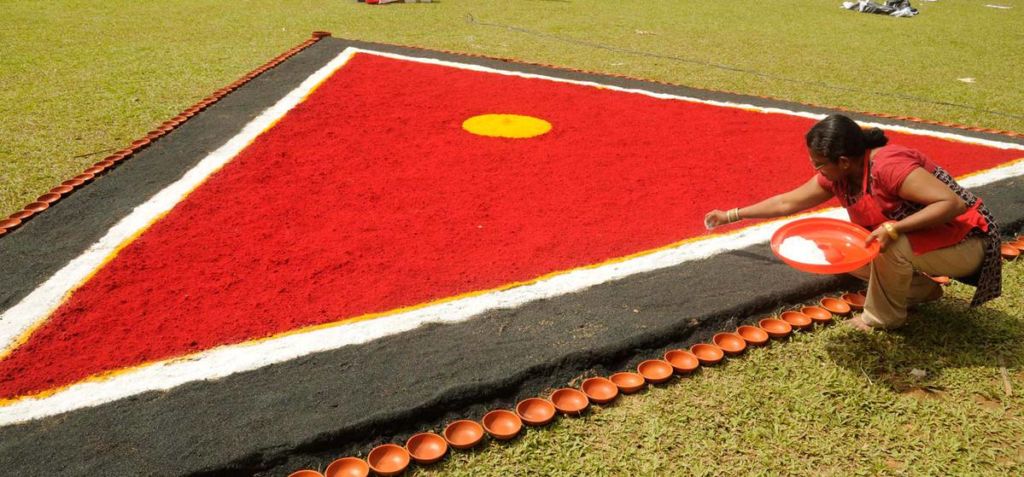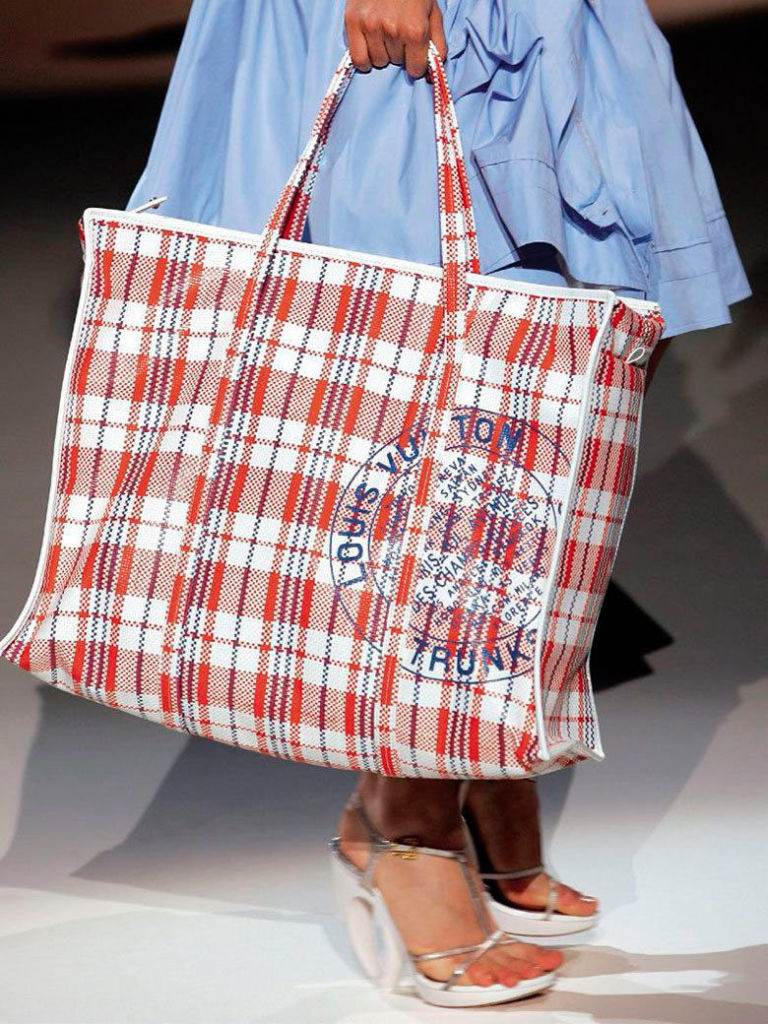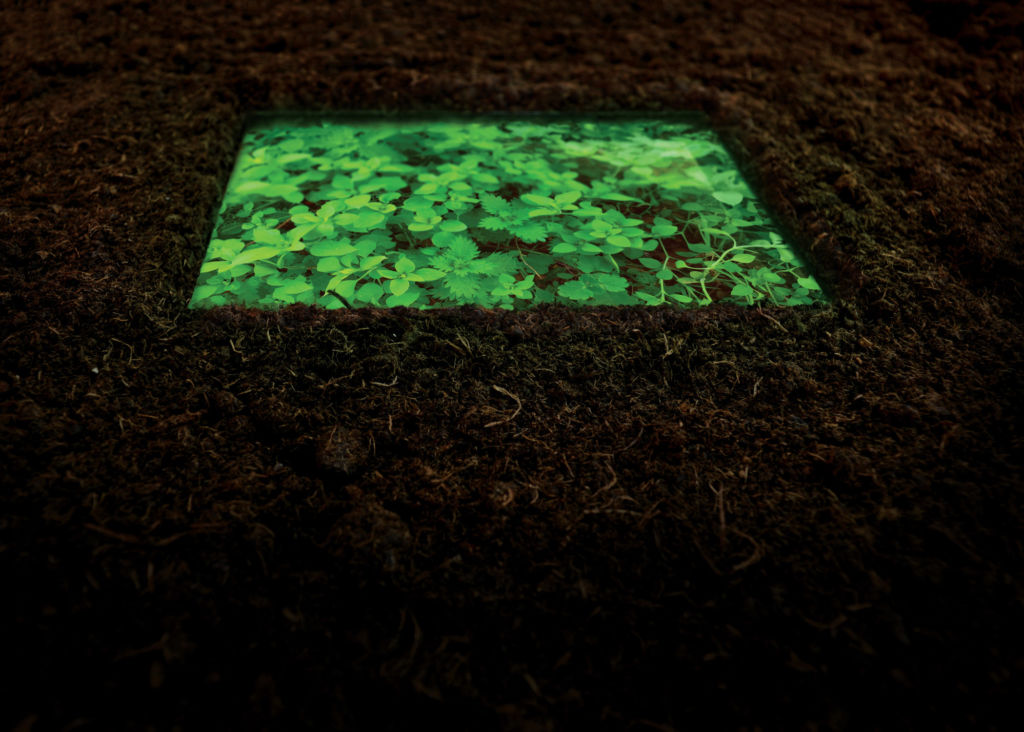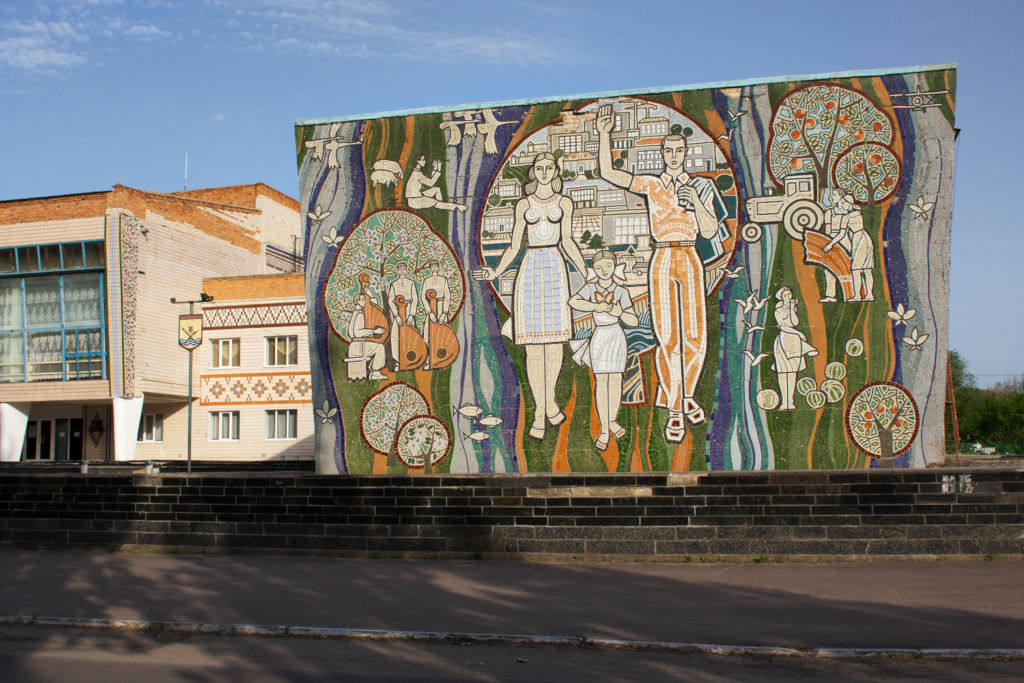Observing the limits of photojournalism in the face of humanitarian and wartime tragedies, artists have sought ways to bear witness to human suffering freed from the grip of media and government powers. Their approach is not without problems. Perhaps their critical potential lies in testing these limits.
(Texte disponible uniquement en anglais)
John Douglas Miller, “Watching v Looking,” Art Monthly, Issue 340, Oct. 2010, 10.
Michel Foucault, Discipline and Punish: The Birth of the Prison [1975] (New York: Random House, Inc., 1991).
Jeremy Bentham created a prison design in the late 18th century that he termed the Panopticon, allowing guards to watch prisoners without themselves being seen, through creative architecture.
Artist’s talk for the presentation of The Day Nobody Died at the Barbican Art Gallery, London, 4 December 2008.
Ibid.
Ibid.
Hito Steyerl, “Documentary Uncertainty,” A Prior Magazine, Issue #15, June 2007.
Susan Sontag, Regarding the Pain of Others (New York: Picador, 2003), 105.
John Douglas Miller, Ibid., 7.
Giorgio Agamben, Remnants of Auschwitz: The Witness and the Archive (London: Zone Books, 2002), 158.
W.G. Sebald, On the Natural History of Destruction [1999] (London: Penguin, 2003). Our thanks to the artists Adam Broomberg and Oliver Chanarin for pointing this passage out.
Joe Scanlan, “Alfredo Jaar: Museum of Contemporary Photography, Chicago,” Frieze, Issue 22, May 1995, 66.
Scott Macleod, “The Life and Death of Kevin Carter,” TIME 144, no. 11, 1994.
Jacques Rancière, The Emancipated Spectator [2008] (London: Verso, 2009), 100.
Joris Luyendijk, Hello Everybody! One Journalist’s Search for Truth in the Middle East (London: Profile Books, 2009), 6.
Joris Luyendijk, Ibid., 188.
Comparison highlighted by John Douglas Miller, Ibid., 9.
John Douglas Miller, Ibid., 10.
Chris Korda, I Like to Watch, video, 2002.
Hito Steyerl, “A Thing Like You and Me,” E-flux, April 2010.
Ibid.
Ibid.
Anna Altman, “Hito Steyerl,“ Frieze Magazine RSS. Frieze Magazine November-December 2009.
Pablo Lafuente, “For a Populist Cinema: On Hito Steyerl’s November and Lovely Andrea,” Afterall Journal, Autumn 2008.
Anna Altman, Ibid.
Hito Steyerl, “No Solution. Interview by Jennifer Thatcher,” Art Monthly, April 2014, 3.
Roger Silverstone, “Complicity and Collusion in the Mediation of Everyday Life,” New Literary History, 33.4, 2002, 769.
Joris Luyendijk, Ibid., 185.
Ibid.
Ranjit Hoskote, “Bearing Inconvenient Witness: Notes in Pro/Confessional Mode,” Narula, Monica; Shuddhabrata Sengupta; Ravi Sundaram; Ravi S Vasudevan; Awadhanedra Sharan & Jeebesh Bagchi (Sarai) And Geert Lovink, eds., Sarai Reader 04: Crisis/ Media (New Delhi: Centre for the Study of Developing Society, 2004), vi.
Alfredo Cramerotti, Aesthetic Journalism: How to Inform without Informing (Bristol: Intellect, 2009).
The goal and assumption of objectivity in journalism and media reporting have long been exposed as both unachievable and even pointless since you can’t avoid cultural, political and economic mediation of the contingent situation reported and of the larger context in which it happens. As such, a degree of manipulation is nothing but second nature of the information industry. But what happens when the idea of erroneous objectivity is embraced and advanced not by media journalism but by contemporary art? Are there alternative perspectives to art or media outlets in response to issues of visualization and engagement? And can there be an emancipated representation? This text seeks to establish a link between what is viewed and what is reported; what is seen and what remains outside the picture; importantly, it is also attempting to unravel what is viewing and what is witnessing.
Subjectivity and performance
Representing a conflict is inherently problematic, and objectivity is futile in the reproduction, distribution and reception of suffering. One indulgence—or necessity—that art has the liberty to embrace, that journalism has not, is subjectivity. Contemporary art is a platform for knowledge production, with regards to spectatorship in the context of crises.1 Media workers, including photojournalists, are bound by perspective, format and timing, irrespective of personal opinion. Today, artists who touch upon the subject of mainstream media and voyeurism often use film and photography as means to discuss the problems of technology and the fallibility of mass media and for showing and distributing images of misery.
Neutrality in the institutions of image production—namely photojournalism, but also NGOs—is unachievable in the context of humanitarian crises and suffering. It’s impossible for people, be they journalists or humanitarian workers, to be neutral in such difficult situations. It calls into question what hierarchical position the viewer holds in the act of looking and what responsibility comes with the power to provide visibility, as it has been discussed by Michel Foucault in Discipline and Punish.2 Those who cannot see but can be seen immediately become subjects for viewing or surveillance.3
Artists Adam Broomberg and Oliver Chanarin articulate this juxtaposition. Though formerly trained as photographers and photojournalists, time progressively shifted their collaborative practice towards art and the circulation of their work moved away from mass media outlets to book publications, exhibitions and international forums. In June 2008 they traveled to Afghanistan to be embedded with British Army units on the front line in Helmand Province. In place of their cameras, they took a roll of photographic paper 50 meters long and 76.2 cm wide contained in a lightproof cardboard box. They arrived during the deadliest month of the war that began in 2001. During the first four days of their stay, attacks pushed the number of British combat fatalities to 100. The title of the resulted work, The Day Nobody Died, refers to the fifth day of their embed, the only day in which nobody was reported to have been killed among the forces of the international coalition. During their embed, Broomberg and Chanarin went on patrols with the soldiers, embarking in journeys up to six hours long, in the back of an armored vehicle in 45-degree heat with just two apertures, each 10 centimeters wide, to look out of, constantly aware that at any point they could hit an IED (Improvised Explosive Device). In response to each of these traumatic journeys, and to a series of more mundane moments that a photographer would record, Broomberg and Chanarin unrolled sections of light-sensitive paper from the box, in the back of the vehicle that they had converted into a mobile darkroom, and exposed it to the sun for 20 seconds. They eventually exposed four six-meter-long rolls.
The resulting photographs are the inverse of traditional war reportage. The six-meter long images deny the viewer the cathartic effect offered by the language of photographic documentation of war and put forward a critique of conflict photography in the age of embedded journalism. As the artists commented, “the usual means to determine the value of the photojournalistic image—its composition, its proximity to danger, its value as evidence—are all undermined.”4 There is a powerful paradox at play. As non-figurative images, they are definitely useless as evidence. Yet, they are proper “action photographs,” direct war representations and a witnessing statement. When you get to know the context, based on information provided by the artists when they exhibit the photos, it becomes impossible to forget that they were made during an embed which is materially inscribed in the pictures. Whereas, in the case of a traditional photojournalistic report, the attempt may be to obscure this fact.
The artists devised this strategy for a number of reasons. The main one comes from their direct experience in previous conflict zones such as Rwanda, Israel and Palestine, Lebanon, Darfur and Iraq. In each case they have struggled with how to represent these events and how representation itself is complicit in their perpetuation. In Afghanistan, sitting in the media operations tent in Camp Bastion in Helmand Province, they were able to observe first-hand the transformation of events into headlines and into images that appear to distill the essence of conflict. In their words: “To watch mutilated bodies being carried out of helicopters on stretchers, followed by the inevitable polite announcements, made explicit a process in which stock phrases, and stock images, are exploited in order to neutralize the horror of these events.”5
Being embedded offered them unprecedented access to the war, but in return the military apparatus had unprecedented access to them. At the end of each day memory cards were scrutinized, and throughout the embed there was an agreement about what could and what could not be made public. Broomberg and Chanarin’s aim evolved from documenting war through figuration to an act of resistance, the interruption of the narrative the military and mass media would have liked them to contribute to. The main protagonist of that “theatre of war” performance, the cardboard box containing the photographic paper roll, became a sort of proxy, a mute witness of a harsh, man-made situation with no intention of documenting anything but the performance itself, in which the artists, the military, the civilians and us, as viewers, were equally complicit.
This work, like the others by Broomberg and Chanarin, avoids the pressure of the media output which demands images of “the now.” Instead, they use other outputs, like books, museum and gallery walls, as hosts, “taking advantage of them as sites of critical discourse and historical comparison.”6 They fully recognize that photojournalism cannot transgress or be critical, as much as it cannot be objective. But while they have real problems with the role of the professional observer, they also believe that suffering demands a witness. They attempt to acknowledge said suffering in a self-reflexive manner that avoids a particularly sanitized depiction of war—with the “veracity” of the evidence that is expected to be present—whilst at the same time highlighting one’s awareness of the situation in which images are produced. They demand us to look harder.
Visualization and inertia
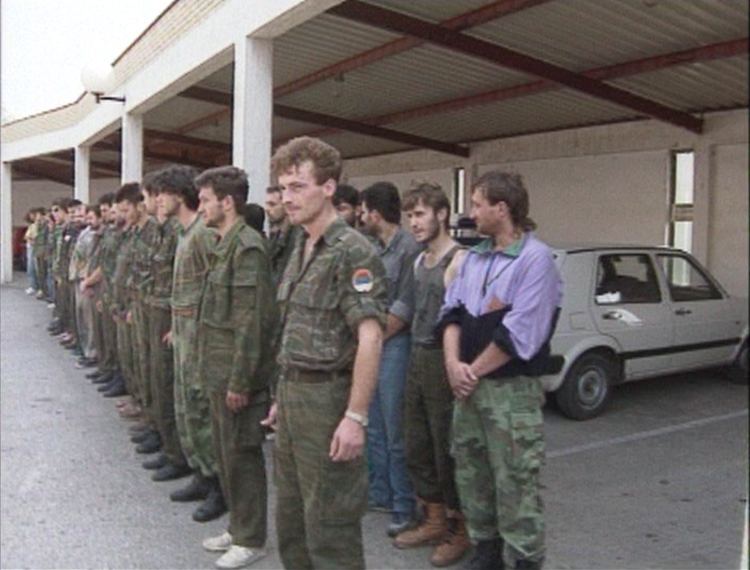
Although artists and scholars are bringing the problematic facets of representation to light, there has not been significant alternatives suggested for the current structure of distribution and consumption of images of conflict. Artist Hito Steyerl points out in a text about documentary practice, “The only possible critical documentary today is the presentation of an affective and political constellation which does not even exist, and which is yet to come.”7 Reflecting on our present information system it is clear that there is not a productive solution and it is, indeed, yet to come.
Research continues to be conducted by artists, art institutions, alternative media sources, scholars, and other collaborative structures, to investigate and understand the precarious relation between mass suffering and its representations. Responses to these issues are surfacing through disciplines separate from mainstream media, bringing forth “alternative” perspectives. As long as we collectively behave as passive spectators, consuming violence from the comfort of our homes, we shall lack the capacity and power to wholly understand. The question arises then, what role must we fulfill to undo this inertia? Is viewing people who suffer from a distance through mediated images different from viewing people who suffer up close in person? Susan Sontag argues that it is still just “watching” and that we are unavoidably voyeurs.8 As long as the system for relaying “news” is intact, we remain spectators. The challenge at hand is that of finding an intelligent form of voyeurism, to initiate a transition from the current system of visual production to one that confronts its strategies of objectification and political and corporate priorities.9
New directions in art are exposing weaknesses in the system that fecklessly coerces us into spectatorship, and as a result awareness is growing. Artists and writers put a lot of emphasis on the fact that crisis is not translatable through words or imagery in any context. Philosopher Giorgio Agamben’s work on the witness and the Holocaust is indeed transferrable to any context of attesting to atrocity: “The authority of the witness consists in his capacity to speak solely in the name of an incapacity to speak.”10 Writer and academic W.G. Sebald expressed similar concerns. Specifically referring to the unreliable tendency of eye-witness accounts of the destruction of German cities by aerial bombardment during the Second World War, he highlights how stock phrases such as “that fateful night,” “all hell broke loose,” “we were staring into the inferno,” and others, function almost to neutralize experiences that are beyond the human ability to comprehend.11
The shortcomings of projects that attempt to portray crises and suffering are productive in that they have made something that has always existed visible: the failure of our existing format for informing and receiving tragedy. From a moral standpoint, an artist cannot travel to a foreign land to film and photograph victims of traumas or suffering strangers alongside photojournalists and refer to themselves as separate from the media.12 After all, artists must also benefit financially from the works they create, and by being an outsider with a camera in a war-torn country are they not as much “atrocity tourists” as the journalists are? Does our consumption of what they produce imply that we are the same but from afar? Perhaps. We are all a part of the same cause-and-effect-machine responsible for the objectification and mediation of suffering. We cannot disconnect from the Western governments, media and institutions that are a part of the deception that the artworks discussed in this text inform; they define our culture, history and contextualize our being.
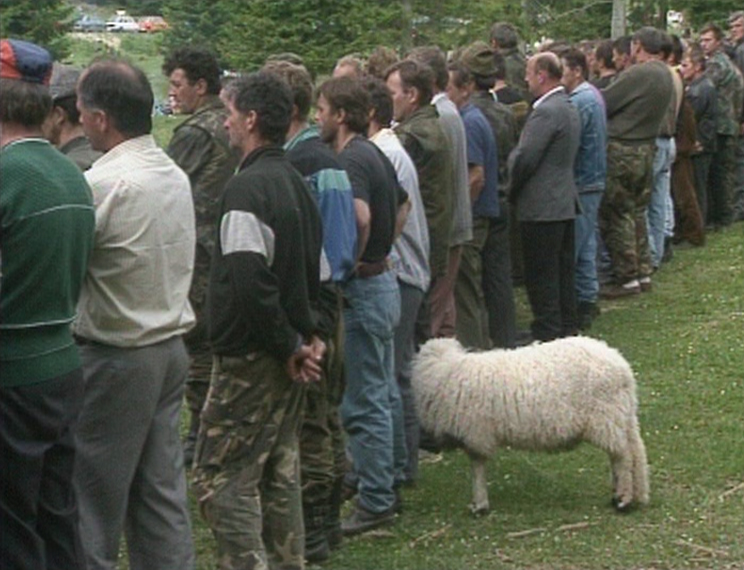
Ethics and aesthetics
The system for showing pictures of suffering is systematically exploitative, although it is not referred to as such. Those creating and exporting images of human carnage however are not unaware, and with awareness come moral responsibility and a seemingly absurd etiquette to uphold, that of exploitation. Photojournalists walk a very precarious line in this respect; they must maintain composure in the face of tragedy and devastation and capture images of it.
Artist Alfredo Jaar addressed the conflicting nature of this position, specifically that of late photojournalist Kevin Carter, in his work The Sound of Silence (2006). Carter became famous for a photograph that he took in Sudan in 1993, of an emaciated infant girl wearing a hospital tag, being closely watched by a loitering vulture. The image ran in the New York Times and soon became the face of the Sudanese conflict. Carter won the Pulitzer Prize for the image and faced an equal amount of scrutiny, being referred to as a vulture himself; people wanted to know what happened to the girl. The image broke down the wall of indifference normally intact between the viewer and journalistic images. When asked what he did after photographing the girl he said that he sat under a tree, lit a cigarette, talked to God and cried.13 Carter committed suicide two months after winning the Pulitzer Prize.
Jaar’s work consisted of a large light box with words describing Carter’s life. After a few moments his photograph flashed onto the screen as quickly as the click of a camera shutter, imprinting the image onto the viewers’s psyches. We are, in fact, as much the “vulture” in his image as he was implied to be. Through this piece, Jaar attested to the burdensome moral pressure weighing on photojournalists and his empathy towards the challenge of making objective pictures. The artwork confirms that the problem is not whether images like these should be made and viewed, but rather the system for which they are created and how they continue to be communicated.14
Respected Dutch journalist Joris Luyendijk wrote a book addressing personal difficulties and decisions he experienced in conforming to an absence of flexibility and varied perspective, required by the very code of journalism. He wrote about his role as the Middle East correspondent for a Dutch newspaper, and how his experiences were not the same as what he was expected to report about. “As a correspondent, I could tell different stories about the same situation. The media could only choose one, and it was often the story that confirmed a commonly held notion.”15
Luyendijk concluded that to break the cycle of “one-dimensional” reporting, a paradigm shift in media reporting was necessary. The change needed is not necessarily a fundamental change but rather the one that would report on a situation and then provide contextualizing parallels or counterbalancing views. “One violent incident would be set, not against another violent one in which victim and perpetrators swapped roles, but against an inspiring story”—a story, he suggests, about members of both sides not committing any violence.16 A romantic notion that is likely to never cease to be more than just that. After all, watching clips of distant communities suffering from the comfort of a living room alongside clips of members of those communities doing something “inspiring” does not change our positions as voyeurs. The format would still stand that brings us closer to the real, simultaneously distancing us from those experiencing it.
Is it critically and ethically possible to represent responsibly the hardship of others through photographic or filmic media? A certain contemporary documentary approach in art has established the role of the objective observer as fictional and artists are now referring to their position as neither objective nor subjective, but rather “engaged.”17 The way in which artists today are aestheticizing the problem of representation is changing. Some artists hold aesthetics subordinate to ethics in the context of what they are presenting. However, in doing so, they are describing the relationship between the documenter and the documented more loudly, perhaps, than their peers who depend on context as a vehicle.
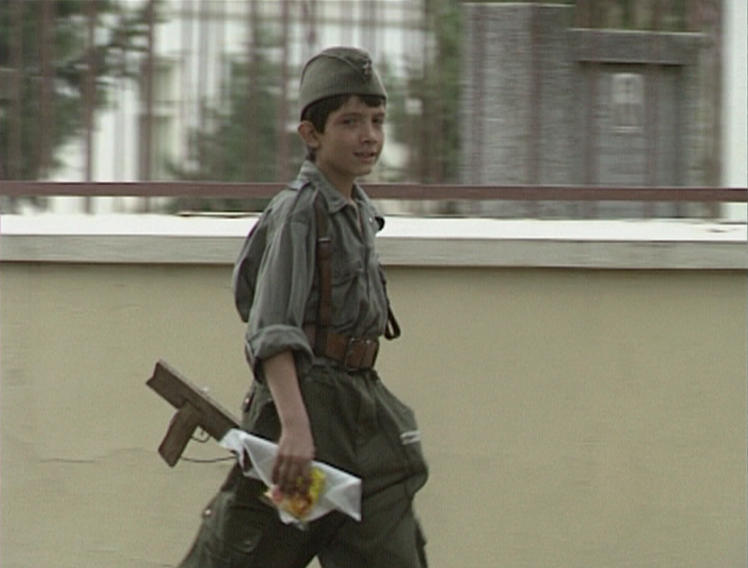
Expectations and fullfilment
Dutch artist Aernout Mik qualifies awareness and perception as circumstantial through his work Raw Footage (2006). The piece presents left-over archival footage of the Bosnian war, found on the floor of the cutting room of ITN (Independent Television News), compiled into a 39-minute two-channel video installation. The piece exposes a temporal reality of the war that would not have been aired, 39 minutes of inaction and calm. The footage was voided as it did not suggest any ethnic cleansing; instead it was uneventful and portrayed soldiers laughing and drinking and people going about their business. Mik demonstrates how the media uses short scenes of spectacular occurrences to paint a picture of an entire conflict. The uneventful nature of the footage is eerily disturbing, echoing what Hannah Arendt referred to as “the banality of evil” in her book Eichmann in Jerusalem,18 revealing the ordinariness of wartime and how unsettling that is.
Our truth-value expectations related to factual documentary techniques, such as live broadcast and interviews, are processes that are rarely questioned when it comes to news articles or programs. Critic John Douglas Miller compares news media to pornography, explaining that its functions are facilitated through repetition and expectation,19 something that artist Chris Korda demonstrated on his own with the rather unsettling video I Like to Watch (2002), compiled not long after the World Trade Center’s attack in New York in 2001, in which TV footage of explosions and crumbling of the skyscrapers are interspersed and synchronized with pornographic acts and orgasmic scenes.20
In a subtler manner, Mik’s Raw Footage criticizes the aesthetic design of “spectacle” and its echoing appropriations from each news outlet to the next, as well as it highlights its ever-thriving conformation to the audience and political anticipations. By using the media “lens” itself he presents the audience with insight as to what decisions the Western media make when “aestheticizing” the distant conflicts. On camera and in conflict, personal trauma ceases to be a private experience; rather it becomes content for “spectators” popular media outlets.21 Awareness that representation is subjective and constructed in the context of humanitarian crises as pictured in the media brings us to reconsider the possibility of an emancipated representation. How then does our understanding of image consumption in this context change, and must we adopt a moral standpoint? Steyerl offers the view: “[…] if we are to acknowledge that subjectivity is no longer a privileged site for emancipation, we might as well just face it and get on with it.”22 What else are we supposed to do? A productive answer has yet to be formulated.
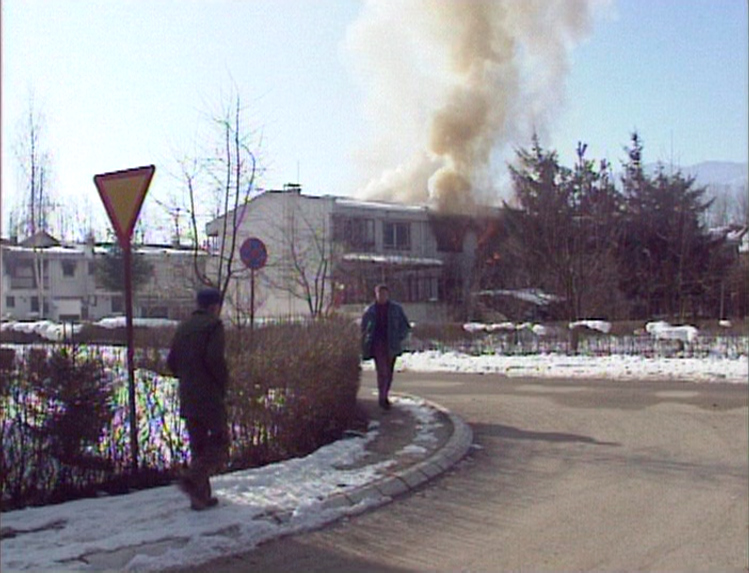
Image-life to real-life
In an article about representation, Steyerl posits women as a departure point to discuss a perspective on authenticity: stereotyping, representing and misrepresenting are problematic. Steyerl flexes this position: “But what if the truth is neither in the represented nor in the representation? What if the truth is in its material configuration? What if the medium is really a message? Or actually—in its corporate media version—a barrage of commodified intensities?”23 Her work echoes these questions and looks at medium as subject and object, going beyond what is represented versus what is.
Her works November (2004) and Lovely Andrea (2007) look at images and their circulation beyond their original and intended contexts, by investigating their origins, implementing documentary techniques mixed with existing imagery of popular culture and fiction. Ultimately, the viewer can take away from her work that images live their own lives which are disconnected from their subject’s lives.24 November recalls a childhood friend of Steyerl’s, Andrea Wolf, who was killed and named a martyr of the Kurdish liberation movement. It explores the impact images carry beyond the control of their subjects. Andrea made the transition from a B-movie star to a revolutionary in the Kurdish conflict on her own accord. However, as November shows, the destiny of her image posthumously was out of anyone’s control.25 Upon her killing in 1998 by the Turkish Police, which regarded her as a terrorist, her image became an icon displayed alongside the founder of the PKK (Kurdistan Workers’ Party) on street posters and protests. The film considers her transitions in her lifetime paralleled to the life of her image.26
In Steyerl’s film Lovely Andrea (2017), commissioned for the international, quinquennial exhibition Documenta 12 in Kassel, Germany, the viewer follows the artist searching for a photo made when she posed as a bondage model during her student days at the Japan Academy of Moving Images in Tokyo, in the 1980s. The work reiterates her image-life theory from November, the representation of herself as a bondage model assumed its own life and present. Twenty years after the image was taken it took only three days to find it. Referring to the discovery of the parallel life her image took on, she said, “It was a piece of paper. It was printed—something produced within certain modes of production. I couldn’t control it ultimately. It was a version I didn’t want to control either. I just followed its trail.”27 In this instance, the life of her image being beyond her grasp is not problematic; however, that is not always the case and in some cases the lives of images can be powerfully destructive to the lives of their subjects.
Responsibility and change
The media holds tremendous power in that it is able to deliver images and clips of harsh realities yet buffer its consumers from the gravity of those realities whilst maintaining a moral disconnection to the subject matter. Televisual media grants us weightless responsibility and sensation in the consumption of faraway spectacles. We are spared from the complexities of the contexts yet granted “access” to whatever traumas are being reported, further allowing us to disengage from the subjects presented.28 Images have the ability to compact violence and power and to spark narratives. Media outlets organize “objective” reactions alongside and publish them to the masses. Here is the margin for irresponsible reporting, broad and unavoidable. The urge to conjure a gripping accompaniment to an image is merely a part of quality journalism. Luyendijk addresses this margin for manipulation by highlighting that journalistic approaches have political consequences and journalists have formats and quotas to adhere to.29 The issues have repeatedly been acknowledged, there are serious and detrimental, moral and ethical perils that must be addressed in the distribution and presentation of local and distant presents.
The myth of objectivity has long been exposed, but can a connection be established between viewing and being viewed? Luyendijk maintains that in order to break the reign of spectatorship and Otherness in mass media, a radically different kind of journalism must be practiced.30 Political mediation of the everyday is unavoidable, and manipulation is indeed a second nature. What will the catalyst for real change be and is it feasible? In an effort to remain objective, many media outlets mask the human element of the recording and delivering events by eliminating “textured” delivery and opting for smooth, machine-like summaries of conflicts. Critique is inherent to human nature; disagreement, difference and dissent are valuable and require a greater commitment than “bland consensus.”31
Revealing to the viewers the invisible structure and power of consumption by acknowledging responsibility whilst exposing our position as inconsequential is one potential route to overcome the impasse. Neutrality is not feasible in the face of humanitarian crises, even with the absorption of responsibility. As tragedy unfolds, we—observers, media journalists and artists included—are not distant from the problem. We are not outsiders looking into an external reality; rather we are a part of the same reality. Our attention is brought to the fact that witnessing a situation is implicit acknowledgment, which ultimately constitutes it, shedding light on our involvement.32
The crisis of objectivity in imagery and narrative is extendable to all forms of representation and is not isolated to circumstances of suffering and injustice. An alternative system of format, language and contextual imagery is needed to appease the issues of representation. The questions have been asked, and the problems highlighted by several different industries including contemporary art—it is a matter of time before a broader paradigm and consciousness shift occurs.
Editor: Vincent Simon
Cover : Adam Broomberg & Oliver Chanarin, The Day Nobody Died, 2008, Unique C-type, 762 x 6000 mm © Adagp, Paris 2020
